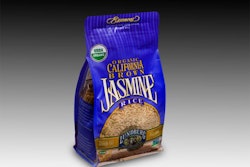
DuPont invited David Luttenberger – CPP, vice president/packaging strategist for CEB Iconoculture, a leading consumer insights and research firm, to share insights on packaging innovation while in town serving as lead juror and facilitator for the 25th DuPont Awards for Packaging Innovation.
DuPont: Your company is well known for delivering packaging-specific knowledge in context with consumer insights. What’s the hottest insight?
Luttenberger: The packaging industry—brand owners, retailers, designers, converters, everyone—is learning to capitalize on ways that packaging can be used to build a one-on-one consumer relationship. Whether it is through design, messaging, or mobile technology, the best concepts are using this consumer touchpoint in a way that engages consumers in a one-on-one relationship that the consumer cares about, not just as a means of sending out a brand message.
How would you characterize the value of packaging, and how should the industry be talking about that?
It’s not exactly front-page news that consumers rarely see the value in packaging. We can be our own worst enemy, and that’s partly because we don’t use words that resonate with consumers. “Source reduction” to the consumer, for example, means less packaging, less product, same price. What is “carbon neutral” or “sustainable packaging” to a middle-class, cost-conscious consumer? Our industry needs to simplify and think like a consumer. Then and only then will consumers see the value packaging brings.
We’ve seen packaging take on challenges like convenience, bringing us nutritious options that match busy lifestyles. What’s the next big issue that packaging can help solve?
There remains so much more potential for packaging to help solve the world food challenge. We are doing a lot to protect food and reduce food waste, and the next wave of solutions will evolve from looking hyper-locally at issues. How you deliver food and water or keep medicines safe will be very different in, say, densely populated regions like India, versus remote areas in sub-Sahara Africa. Their issues are different, their solutions will be different; the common denominator could lie within the distribution network, with a unique packaging structure, or it could lie in simply rethinking how an existing package is designed or converted.
Kraft Foods CEO Tony Vernon recently talked openly with Forbes about reinvigorating innovation in “How Kraft Got Its Innovation Groove Back.” What’s the most common sign that innovation is being starved?
In today’s tight economy, you can’t just look at your research and development budget and say, “We’re not investing enough.” It’s more than a function of investment. You have to look at your innovation pipeline and ask, “What’s the impetus for innovation? Is it a great idea? Or is it a great idea that meets a known need?” Today, there is a risk in investing in “great ideas” that don’t address a “need.” I would argue that today, we don’t have that luxury.
























